California Sea Lion, Zalophus californianus
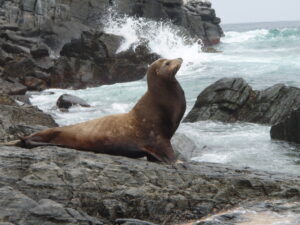 California Sea Lion, Zalophus californianus, Male. Photograph taken at Punta Lobo, Baja California Sur, June 2010.
California Sea Lion, Zalophus californianus, Male. Photograph taken at Punta Lobo, Baja California Sur, June 2010.
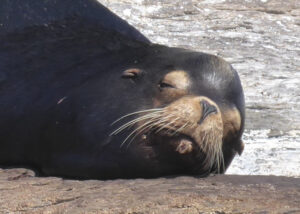 California Sea Lion, Zalophus californianus, Male. Photograph taken in coastal waters off Isla Coronado, Baja California Sur, March 2024.
California Sea Lion, Zalophus californianus, Male. Photograph taken in coastal waters off Isla Coronado, Baja California Sur, March 2024.
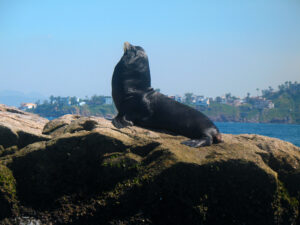 California Sea Lion, Zalophus californianus, Male. Photograph taken along the coast of Mazatlán, Sinaloa, October 2017. Photograph courtesy of Kenneth Tse, Toronto, Ontario, Canada.
California Sea Lion, Zalophus californianus, Male. Photograph taken along the coast of Mazatlán, Sinaloa, October 2017. Photograph courtesy of Kenneth Tse, Toronto, Ontario, Canada.
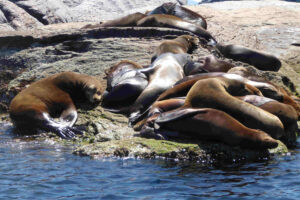
 California Sea Lions, Zalophus californianus. Photographs taken from coastal waters off Isla Coronado, Baja California Sur, October 2019. Identification courtesy of Bob Hillis, Ivins, Utah.
California Sea Lions, Zalophus californianus. Photographs taken from coastal waters off Isla Coronado, Baja California Sur, October 2019. Identification courtesy of Bob Hillis, Ivins, Utah.
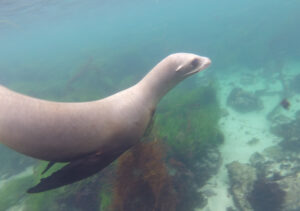
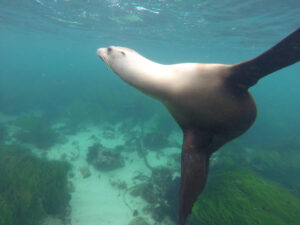 California Sea Lion, Zalophus californianus. Underwater photographs taken in coastal waters off La Jolla, California, June 2014. Photographs, and identification courtesy of Bob Hillis, Ivins, Utah.
California Sea Lion, Zalophus californianus. Underwater photographs taken in coastal waters off La Jolla, California, June 2014. Photographs, and identification courtesy of Bob Hillis, Ivins, Utah.
 California Sea Lion, Zalophus californianus. Underwater photograph taken in coastal waters off Punta Lobos, Isla Coronado, Baja California Sur, June 2001. Photograph and identification courtesy of Matt Levey, Santa Cruz, California.
California Sea Lion, Zalophus californianus. Underwater photograph taken in coastal waters off Punta Lobos, Isla Coronado, Baja California Sur, June 2001. Photograph and identification courtesy of Matt Levey, Santa Cruz, California.

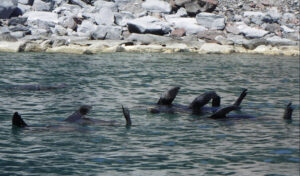 California Sea Lions, Zalophus californianus. Photographs taken off coastal waters of Isla Coronado, Baja California Sur, May 2023. Identification courtesy of Dr. Tom Bartol, Carlsbad, California.
California Sea Lions, Zalophus californianus. Photographs taken off coastal waters of Isla Coronado, Baja California Sur, May 2023. Identification courtesy of Dr. Tom Bartol, Carlsbad, California.
Phylogeny: The California Sea Lion, Zalophus californianus (Lesson, 1828), is a member of the Otariidae Family of Eared Seals, Fur Seals, and Sea Lions, that is known in Mexico as león marino de California. This species historically was divided into three subspecies, which have been reclassified into three separate species. The Galapagos Sea Lion, Zalophus wollebaeki is limited in range to the Galapagos Islands and the adjacent mainland. The Japanese Sea Lion, Zalophus japonicus, historically ranged from Alaska to Korea, but became extinct in the 1950’s. Thanks to generations of trained “seal” shows at zoos, oceanariums, and circuses, California Sea Lions are perhaps the most familiar of all Pinnipeds. They are active, gregarious and easy to train. They quickly lose their fear of humans and can become a nuisance in marinas and waterfront properties.
Morphology: Male California Sea Lions are large and robust while the females and immature males are slender. They have long and straight snouts. Males develop a prominent sagittal crest at about five years old, often topped with a tuft of lighter hair. The genus name refers to this exaggerated crest. Both sexes have large, wide fore-flippers used to propel them through the water while the hind-flippers act as a rudder with fleshy “toes” and narrow claws for grooming. Females are silvery to gray after molting, but fade to tan or light brown. Adult males are dark brown, with lighter faces. Females of the species reach 2 meters (6 feet 7 inches) in length and 110 kg (242 lbs) in weight while males are larger reaching 2.4 m (7 feet 10 inches) and 390 kg (858 lbs) in weight.
Habitat and Distribution: California Sea Lions are generally found along the coastline, or between the coast and offshore islands. They are very accomplished divers, diving as deep as 535 m (1,760 feet). They come ashore on sand and cobble beaches, as well as rocky outcrops. They will often spend days, or even weeks, foraging at sea before coming ashore. California Sea Lions range from British Columbia to central mainland Mexico, including the entire Sea of Cortez. They breed on the offshore islands of Southern California, Baja California, and the Central and Southern Sea of Cortez.
Diet: The California Sea Lions feed primarily on fish and squid. They have a reputation for stealing fish from commercial and sports fishermen.
Predators: The California Sea Lion is prey to sharks, orcas, and killer whales.
Reproduction and Development: The male California Sea Lion is polygamous, with each having a breeding territory containing up to fourteen females. This species of sea lion reaches sexual maturity at four to five years and socially maturity at nine to twelve years. They have life spans of fifteen to twenty years.
Behavior: Thanks to generations of trained “seal” shows at zoos, oceanariums, and circuses, California Sea Lions are perhaps the most familiar of all Pinnipeds. They are active, gregarious, and easy to train. They quickly lose their fear of humans and can become a nuisance in marinas and waterfront properties.
Human Impact: The California Sea Lion often become entangled in nets, overfished for their food value, and suffer from bioaccumulation of toxins from pollution. Due to their tendency to steal fish from fisherman, they have been shot illegally. At present the California Sea Lion is protected under the Marine Mammal Protection Act.